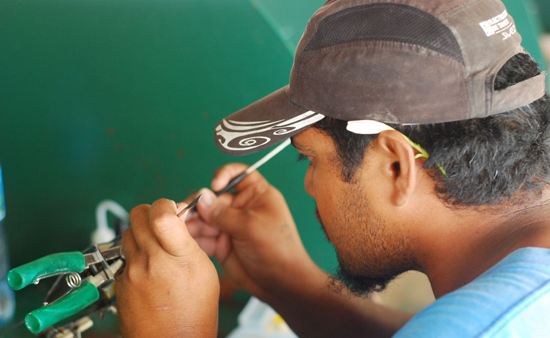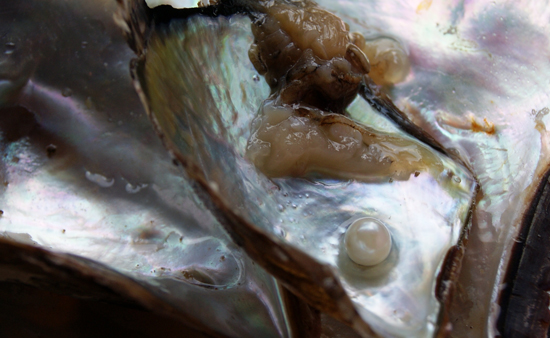
The Emergence Of Cultured Pearls
The advent of techniques for culturing pearls in saltwater oysters brought these fabulous gems within the reach of many, without depleting further the world’s natural mollusc beds. The method used for the creation of a cultured pearl is still widely used today.
A small round bead of shell material from a mussel and a piece of nacre-producing tissue from another oyster is inserted into a saltwater member of the Pintadine shellfish family. This highly skilled procedure is called a graft.

The nacre-producing tissue forms a small pearl sac around the bead and then gets to work covering the irritant with layers of nacre. Once the process has started, the pearl farmer has little control over of the final size, shape and colour of the pearl produced.
Once grafted less than 5% of these Pintadine shellfish, commonly referred to as oysters, go on to produce the best quality cultured pearls. Each pearl is unique and individual.

Today these grafting techniques are used in countries such as Japan, Indonesia and Australia to produce a wide variety of cultured pearls in both saltwater and freshwater molluscs.
This amazing diversity has inspired new directions of pearl jewellery and fashion beyond the classic white pearl necklace.
The next articles in this series will look in turn at the many different types of cultured pearl, in particular Freshwater, Akoya, Tahitian and South Sea pearls.
Image Credits:
With thanks to Alex Valvanis http://www.flickr.com/photos/djsik/, under a Creative Commons licence http://creativecommons.org/licenses/by/2.0/deed.en

